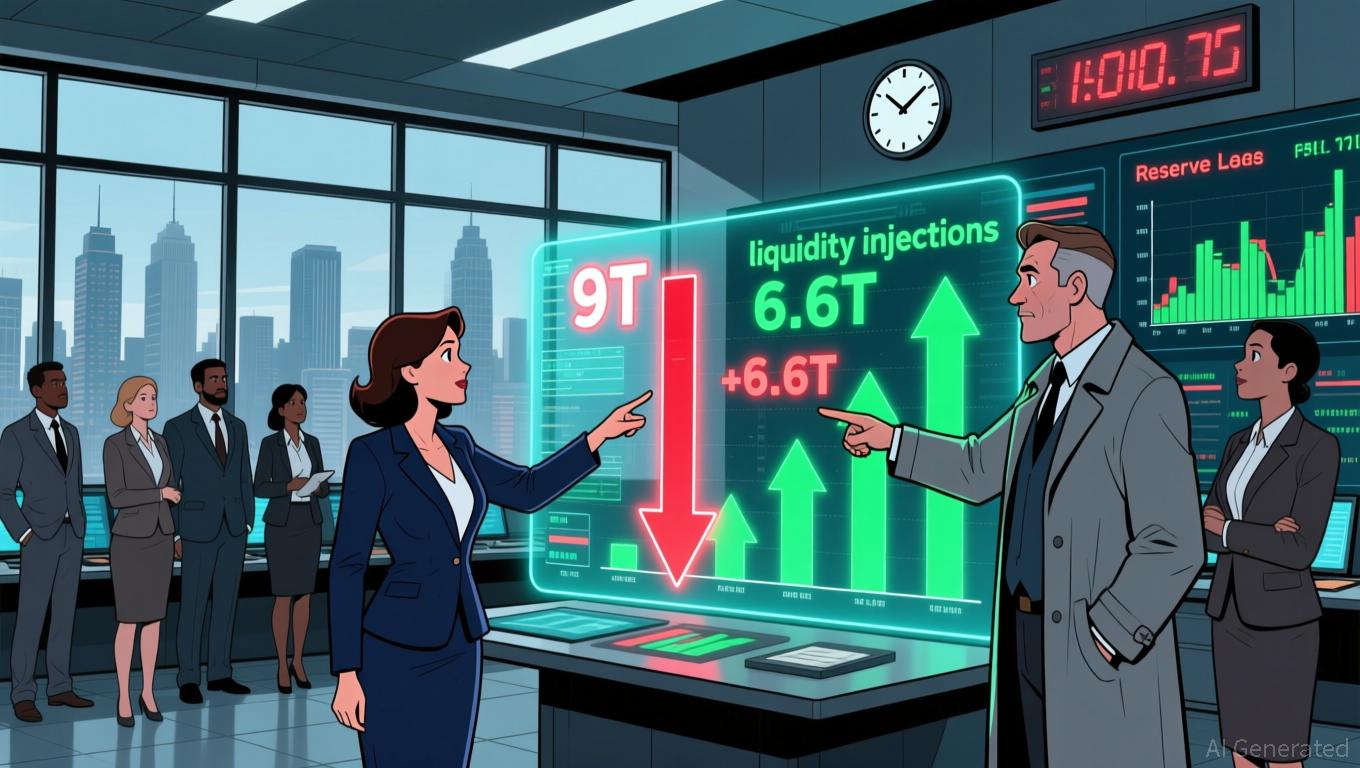ZEC rises 50.53% over the past month as large investors and favorable market trends support upward movement
- ZEC surged 50.53% in 1 month as a whale on Hyperliquid built a $2.21M long position with 5x leverage, selling 5,000–15,000 ZEC during a recent correction. - ZEC traded near $610 with a 1.006 long/short ratio, showing bullish momentum via MACD (101.55) and MFI (71.17) despite weakening price momentum. - A new 10x leveraged ZEC long on Hyperliquid and Arthur Hayes’ bullish BTC/ZEC outlook highlight growing institutional interest in privacy-focused crypto. - A proposed MFI-based ZEC trading strategy (buy at
As of November 10, 2025,
The largest ZEC long position on Hyperliquid has been aggressively accumulating since November 3, starting with $2.21 million. This investor opened long positions in two main price zones: $497–$499 and $597–$595. Each time, the price experienced notable gains within a day of their entry. Despite a market pullback last week, the whale reduced exposure on November 9 and 10, selling between 5,000 and 15,000 ZEC, but still maintains a 55,000 ZEC long at an average entry of $555.4 with 5x leverage. Additionally, $500,000 was transferred to their on-chain wallet, hinting at possible further moves.
Zcash (ZEC) ended November 10 at $611, bouncing back 3% after a 4% drop the day before. Open interest in ZEC derivatives exceeded $1 billion, up 1.4% in the last day. The long-to-short ratio stands at 1.006, indicating a balanced market. ZEC is trading close to the upper Bollinger Band at $610, below the $667 mark, and the MACD remains bullish at 101.55 compared to 82.91. However, the flattening histogram points to fading momentum, while the Money Flow Index (MFI) at 71.17 signals strong inflows but also suggests the asset may be overbought.
On November 10, a new wallet deposited 3.62 million
Backtest Hypothesis
A suggested backtesting method for ZEC is designed to test the effectiveness of the Money Flow Index (MFI) as a trading indicator. The approach considers a buy when the MFI rises above 80 (the typical overbought threshold) and a sell when it drops below 70. The objective is to determine if this method would have consistently produced profits from January 1, 2022, to now.
To carry out the backtest, it’s important to confirm the precise ZEC ticker (such as “ZEC-USD”, “ZEC-USDT”, or an exchange-specific code) and verify that 80 is the correct overbought level. After these details are set, MFI data can be collected, trade signals generated, and the strategy’s results analyzed.
This hypothesis fits the current technical landscape, as ZEC appears to be consolidating and showing overbought signals, making MFI a relevant tool for identifying entry and exit opportunities. If proven effective, this strategy could help traders systematically take advantage of ZEC’s recent bullish trend.
Disclaimer: The content of this article solely reflects the author's opinion and does not represent the platform in any capacity. This article is not intended to serve as a reference for making investment decisions.
You may also like
Bitcoin Updates: Bitcoin Rebounds Following Shutdown Deal, Looks Toward Major Regulatory Progress
- Bitcoin stabilized above $105,000 as U.S. lawmakers neared ending the 40-day government shutdown, potentially boosting market liquidity and crypto demand. - Analysts highlight a "dual catalyst" of shutdown resolution and expected lower CPI data, predicting Bitcoin could rise to $112,000 amid improved macroeconomic optimism. - Trump's $2,000 tariff dividend proposal and CFTC's planned approval of leveraged crypto trading next month further support risk appetite and institutional interest. - Regulatory del
Bitcoin Updates: The 2025 Crypto Split—Blue-Chip Reliability Versus BZIL’s Rapid Growth Prospects
- BullZilla ($BZIL) leads 2025 crypto presales with a 3,941.56% ROI projection, priced at $0.00023239 during its 9th stage. - BNB and TRON (TRX) maintain steady gains at $952.79 and $0.286888, offering conservative alternatives to BZIL's speculative growth. - Market optimism, fueled by Trump's economic remarks and Bitcoin's rally, drives attention to BZIL's deflationary tokenomics and 24-stage burn mechanism. - Critics warn of presale volatility, but BZIL's liquidity locks and staking rewards aim to mitiga

DASH Price Drops 7.21% Following Shareholder Sale Disclosures
- DASH fell 7.21% in 24 hours amid a 27.4% 7-day drop, despite a 99.6% annual gain. - A shareholder trust filed to sell 4,575 DASH shares via a 10b5-1 plan, signaling potential ownership shifts. - DoorDash faces intensified grocery delivery competition from Instacart, Walmart , and Venmo's new rewards program. - Technical analysis shows weak mean-reversion potential post-sell-offs, with high outcome dispersion requiring strict risk management.
Fed Faces a Pivotal Choice: Managing Liquidity or Controlling Inflation
- Fed may expand balance sheet to address liquidity needs amid shrinking reserves, signaling potential end to 3-year QT program. - Officials pause QT as $6.6T reserves deemed "somewhat above ample," but warn of risks from inflation above 2% target and market volatility. - Governor Mester cautions against aggressive rate cuts, citing economic rebound risks and fiscal/regulatory factors boosting 2026 growth outlook. - External pressures including government shutdown delays and stablecoin demand growth compli
